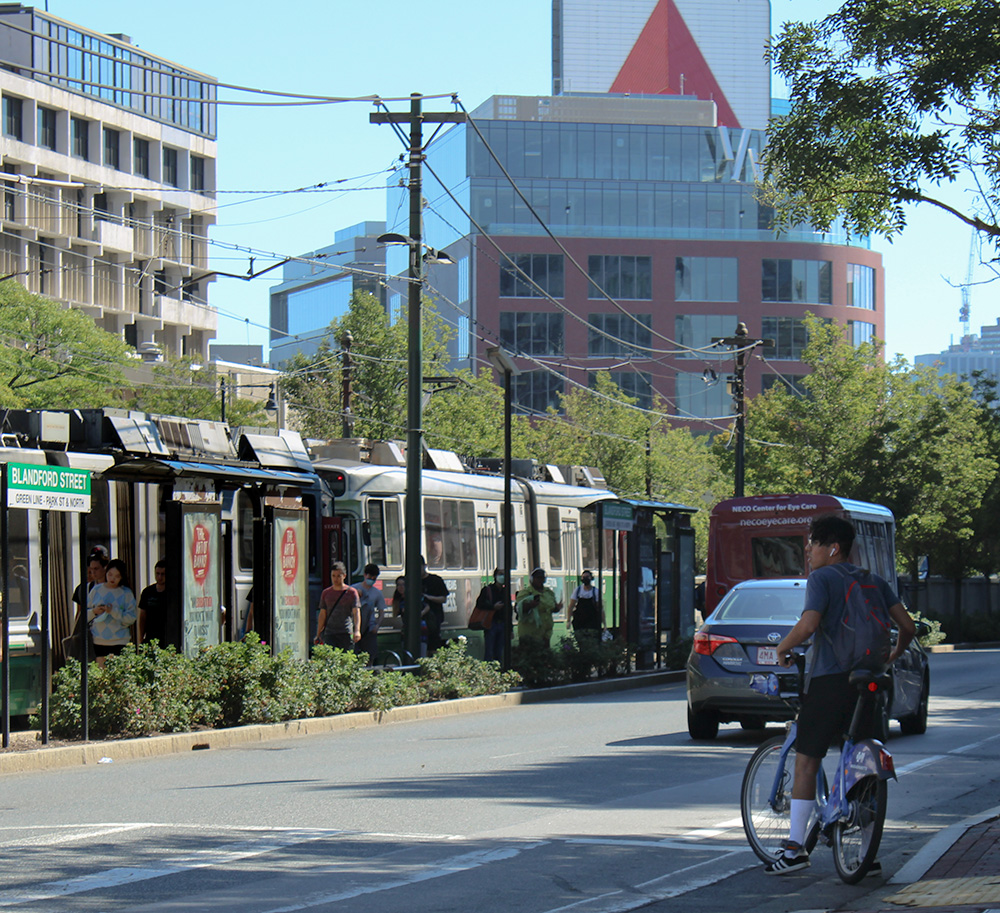
Repairs on the Orange Line are 82% complete as of Sept. 12, and the line is set to reopen on Monday, according to a MBTA press release. The announcement comes after Mayor Michelle Wu spoke at Hynes Convention Center last Wednesday to address her initiative to expand bike access across the city.
“Accessible, affordable, reliable transit doesn’t just tear down the barriers built by ineffective transportation systems, it creates opportunity and fosters community actively, intentionally,” she said at the conference.
Her appearance occurred amidst the halting of service on the Orange Line for safety repairs, and the closing of the Green Line for work on the Government Center Garage.
Wu spoke at the National Association of City Transportation Officials Designing Cities Conference and acknowledged the inconveniences and delays with the shutdowns. She explained that it has provided a chance to reevaluate the city’s infrastructure and modes of transport.
“While this shutdown has been, in many ways, disruptive, it has also been an opportunity for us to pilot a new vision for Boston’s infrastructure and to show just how quickly we can move when we choose to,” she said.
The initiative will expand Boston’s public bikeshare program by adding 100 new Bluebikes stations and nearly 10 additional miles of bike lanes, along with building more speed humps and raised crosswalks in the next three years.
Matthew Petersen, a program manager for Transit Matters, a local transit advocacy organization, said he believes Wu to be “one of the most transit-forward mayors we’ve had in a while.”
To get cars off the streets, Wu has also taken action to limit the amount of parking spaces in housing by establishing “a maximum parking ratio for developments over 50,000 square feet” and doing away with “parking minimums in affordable housing developments.”
“By providing better options in transit and bike and everything else, for people who still have to drive … you are often providing a better experience because the traffic is alleviated, or because the traffic is not so unpredictable or unsafe,” Petersen said.
Carly Von Halle, a Massachusetts resident and Boston University student, said restricting access to some forms of transportation can make things “tricky.”
“It’s an interesting idea, but we just need to take into consideration all the factors and what people will use the most,” she said. “You want to encourage people to bike when they can, but some people just can’t, whether [they have] disabilities or also living too far that they can’t bike.”
However, adding new bike lanes and installing new BlueBikes stations can be done relatively quickly, Petersen said.
“It’s not too expensive, and it’s really fast, whereas transit infrastructure, that’s heavier duty,” Petersen said. “That takes a larger planning process and there are a lot of planning processes ongoing for transit.”
Wu said even though there have been interruptions in Bostonians’ daily routines during the shutdowns of the MBTA, the long-term good will outweigh the short-term difficulties.
“This is not a city or a region that is going to wait to do things comfortably, conveniently, when we get everyone on board. We have no time to waste,” Wu said. “To make real progress, you can’t be afraid to tear up the street, especially if after all that tearing, we end up with something stronger, safer and connects all of us even more.”






















































































































Jeannie Nguyen • Sep 15, 2022 at 9:11 am
This is a great article—very informative!